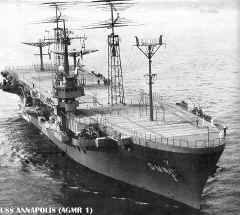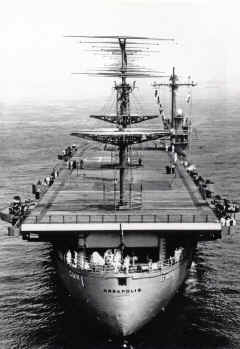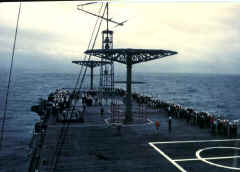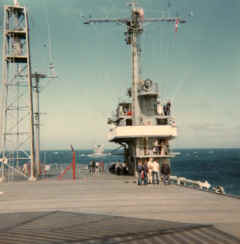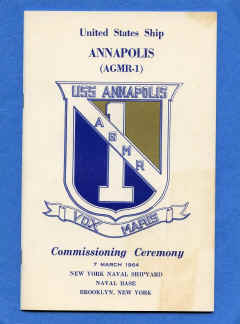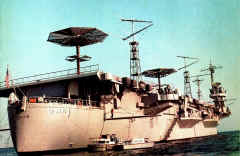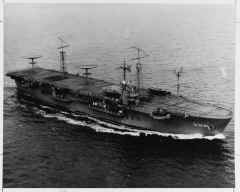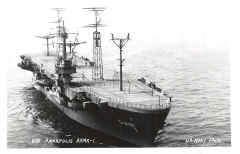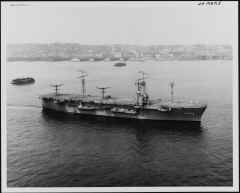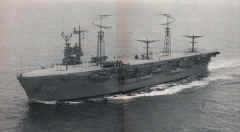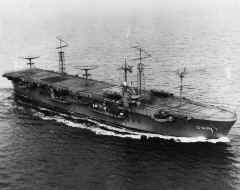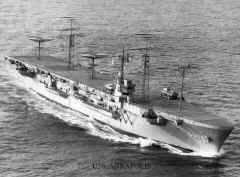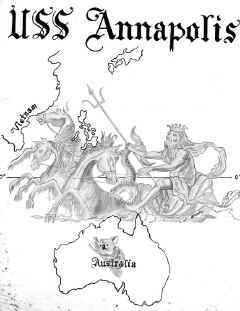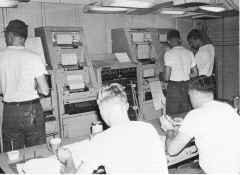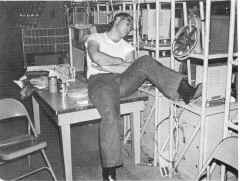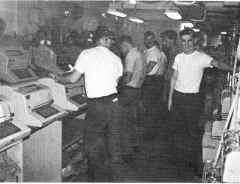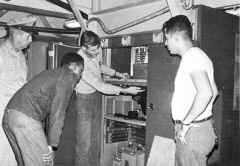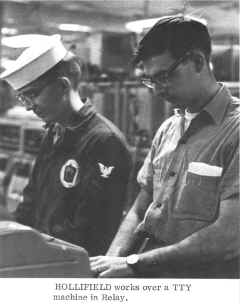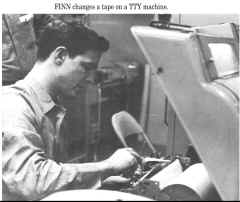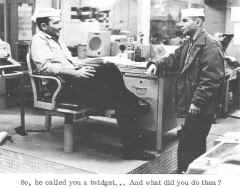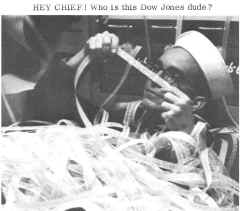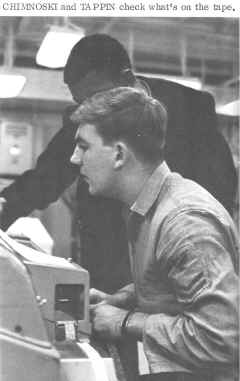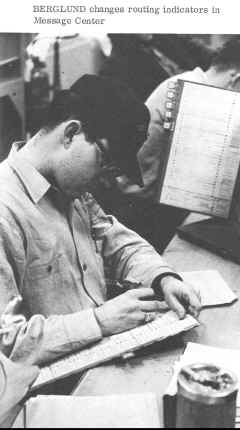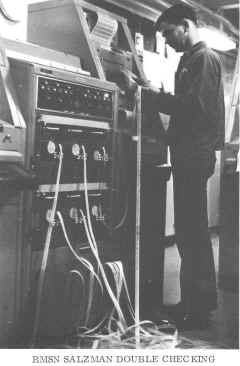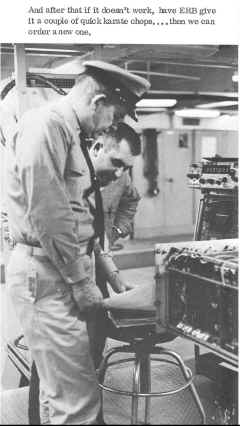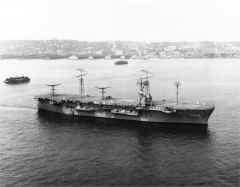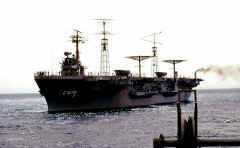USS Annapolis AGMR-1 Communications Major Relay Ship
From BuShips Journal October 1965 -
USS ANNAPOLIS ии Floating Message Center
By CAPT J.J. Rowan, USN
Former Commanding Officer, USS Annapolis
Editor's Note: A new type ship began operating with the Fleet in the fall of 1964 - in effect a shore-sized naval communications station but afloat and mobile. The
USS Annapolis (AGMR-1) is the Navy's first major communications relay ship. Captain Rowan's article describes the role this unique ship may be called upon to play with our operating forces at sea.
The concept of the Annapolis envisions providing mobile communications for the command and control of fleet operations in areas where
shore-based communications facilities do not exist or are inadequate. The conversion of an escort-type carrier to an AGMR was initially included in the Fiscal 1962 Shipbuilding and Conversion Program, but was deferred to the 1963 program. Chosen for the conversion was the
Gilbert Islands (AKV-39), the former CVE-107 first commissioned in early 1945. As an escort aircraft carrier
Gilbert Islands saw action during World War II in the Okinawa-Gunto operations and the Australian operations in Borneo. During the Korean War she served as an aircraft ferry and was subsequently mothballed.
The conversion to a communications ship began in August 1962 when Gilbert Islands was towed from her berth in the Reserve Group at Bayonne, New Jersey, to the New York Naval Shipyard where the conversion took place. Renamed
USS Annapolis, she was commissioned as the AGMR-1 on March 7, 1964.
Operating Areas
The services which can be provided by Annapolis are fleet broadcasts and ship-to-shore circuits.
The ship may operate for prolonged periods underway, at advance bases, or in remote locations. The services provided while operating may be as an augmentation of existing shore communications, as a substitute for essential communications that may be lost or become unavailable, or as a temporary extension of communications into areas of special operations.
Annapolis is equipped with extensive communication-electronics hardware. The bulk of the equipment is designed to handle large volumes of message-type communications, primarily radioteletype, on either single-channel or multi-channel circuits. Facilities also exist to handle facsimile, voice, and CW types of communications. Some of the equipment installed is the first of its kind afloat and in some instances the only one of its kind in the Navy.
The ship has approximately 30 transmitters providing frequency band coverage ranging from low frequency to ultra high frequency. The power outputs of the transmitters vary from ten watts to 10,000 watts. Numerous radio receivers are installed, and their frequency bands correspond to the transmitter frequency coverage.
There are five antenna towers which rise from the antenna deck, formerly the flight deck. The towers support the antenna arrays for low, medium, and high frequency transmitters and receivers. Some of the transmitting antennas are relatively directional, thus facilitating a concentrated, beamed radio signal. In view of the large numbers of transmitters and receivers and the relatively little space for the antennas, most transmitters and receivers must share antennas. This is done through a system of multicouplers. The complicated antenna system is the first of its kind and was designed especially for installation in
Annapolis.
Annapolis can be used in almost any contingency in which it is envisioned that Fleet communications will run into difficulties. The large amount of electronic equipment installed makes possible the handling of a large volume of messages. The powerful transmitters and efficient antennas make possible reliable communication transmission over any distances required by the Navy. The sensitive and efficient receiving system makes possible the reception of signals that many other ships would not be able to receive. Numerous multi-channel sets permit the simultaneous handling of four, eight, or 16 channels of teletype on one frequency, affording an obvious saving in transmitters and frequencies and a tremendous gain in message handling capacity.
Relay Race
The word "relay" must be emphasized when trying to envision the communication operations of
Annapolis. Messages may arrive via ship-to-ship or shore-to-ship circuits in systems such as radioteletype, CW, voice, facsimile, visual, or if radio silence prevails in the force task - transported by helicopter and destroyer. These messages are internally processed for further relay on broadcast, ship-to-shore, or ship-to-ship circuits.
The vast majority of messages are handled on the radioteletype systems. Here is a prime difference of mission between a major communications relay ship, such as
Annapolis, and a command ship, such as the USS Wright (CC-2). Each ship has sizeable communication installations, but the arrangement and circuit use of the equipment is considerably different.
Missions Differ
The equipment in Annapolis is arranged primarily to facilitate the expeditious relay of large volumes of teletype messages for a large force on broadcast, ship-to-ship, and ship-to-shore circuits. The equipment in
Wright, designed as a floating command headquarters, is arranged primarily to support the "voice of command" in Wright, either tactically or administratively, with an equally heavy emphasis on both voice and teletype circuits.
In Annapolis, very little of the message traffic handled would be addressed to or originated by
Annapolis; in Wright, most of the messages handled would be addressed to or originated by the embarked command.
Annapolis does not have the space or facilities for an embarked flag staff, while
Wright is designed to support a large headquarters type command, and space is provided for numerous offices, war rooms, and briefing and conference areas. Facilities are available for theatre-type presentations similar to command posts ashore, including projection equipment and large screens for the display of maps and photographs which can be produced on board. Large status boards and maps, mounted on tracks so that they may be easily rolled into view, are displayed against bulkheads. Thus the missions and tasks of the two ship types make them independent of one another.
However, were the two ships to be involved in the same operation, the envisioned employment would have the command in Wright using the broadcast, ship-to-ship, and ship-to-shore relay facilities of
Annapolis for general-service communications with the other forces involved. The communications facilities of
Wright would be used by the command for its own, specialized-command ship-to-shore and ship-to-ship communication requirements.
Tremendous Volume
A Cuban or Lebanese type situation is an example of an operation in which
Annapolis could profitably be employed. During these emergencies there was tremendous competition for frequencies by the large number of commands and ships endeavoring to send large volumes of message traffic on ship-to ship and ship-to-shore circuits. These circuits and the normal broadcasts became heavily loaded because of the sheer volume of messages for such a large number of commands and ships.
Annapolis could have carried a considerable portion of the message load.
As an example, Annapolis could have provided the communications to a large functional group such as the Atlantic Fleet Amphibious Force. By acting as a concentration point at the scene of action for the relay of messages back to shore stations,
Annapolis with her powerful transmitters and multichannel circuits, would have improved the speed, efficiency, reliability, and capacity of the many individual ship-to-shore circuits. Similarly, reliability could have been vastly improved on the shore-to-ship circuits if
Annapolis had acted as the relay point because of her refined and improved receiving antenna system.
The employment of the multi-channel equipment on the ship-to-ship and ship-to-shore circuits also would have enabled a better distribution of the preciously few good frequencies available. Fleet broadcasts near the scene of action in the radioteletype, CW, and facsimile modes would have been available and, because of near proximity to the operating forces, would have been more reliable than a broadcast from a distant shore station.
The internal traffic-handling capacity of Annapolis is quite high and, in terms of relay for broadcasts, ship-to-ship and ship-to-shore circuits, is sizeable enough to support several at-sea task forces involved in operations.
It is believed that the employment of Annapolis in such operations would have done much to eliminate the traffic-handling problems, both in the ships and at the distant shore communications stations, by acting as a temporary extension of the shore stations into these areas of special operations. In the future, it is obvious that
Annapolis will have an important part to play in handling communications for U.S. Naval forces.
